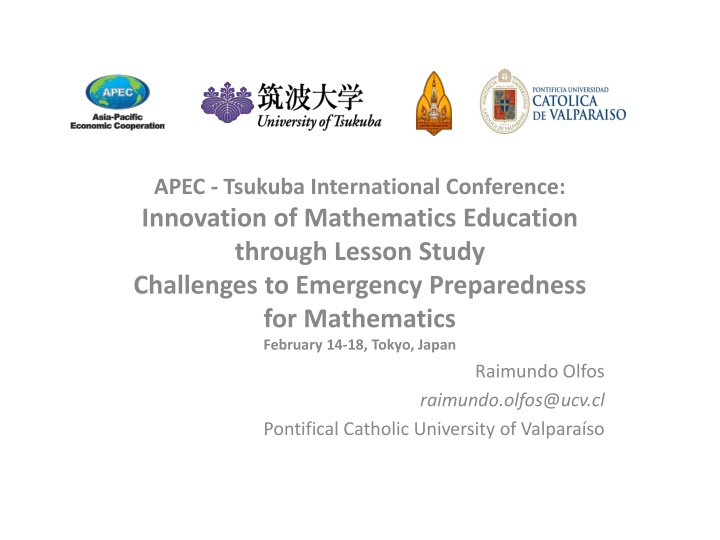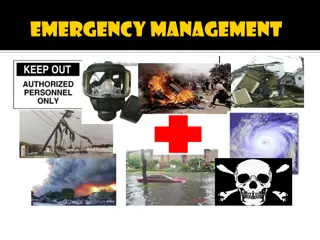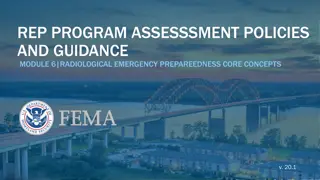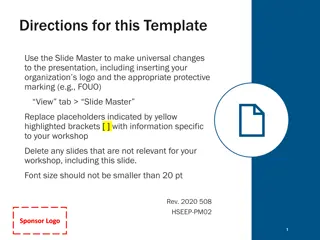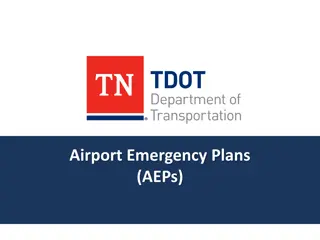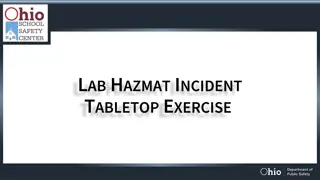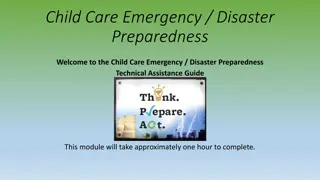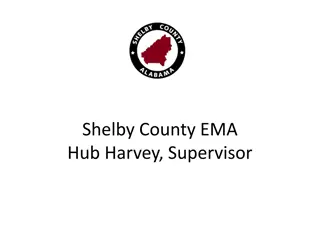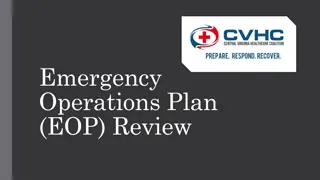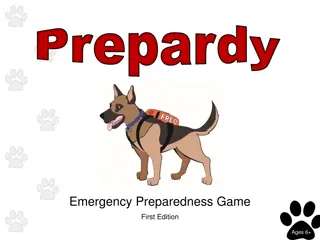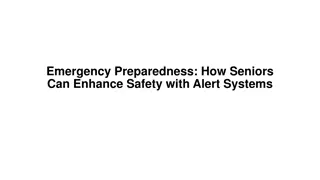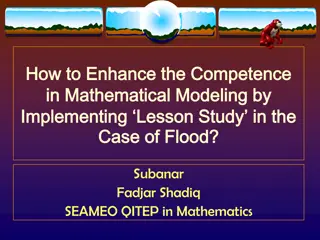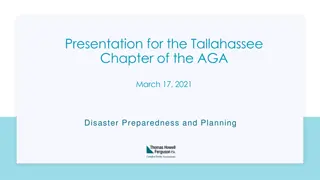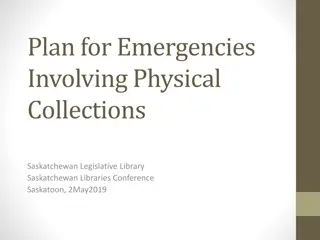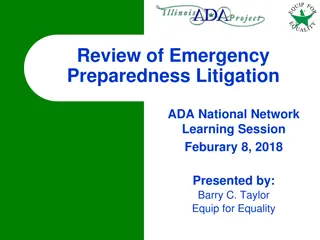Mathematics Education and Emergency Preparedness Lesson Study
Explore the intersection of mathematics education and emergency preparedness through lesson study. Discover lesson plans focusing on numbers and geometry, along with school safety adjustments and escape routes for earthquakes. Engage in curricular relevant activities to enhance awareness and preparedness for emergencies in educational settings.
Download Presentation

Please find below an Image/Link to download the presentation.
The content on the website is provided AS IS for your information and personal use only. It may not be sold, licensed, or shared on other websites without obtaining consent from the author.If you encounter any issues during the download, it is possible that the publisher has removed the file from their server.
You are allowed to download the files provided on this website for personal or commercial use, subject to the condition that they are used lawfully. All files are the property of their respective owners.
The content on the website is provided AS IS for your information and personal use only. It may not be sold, licensed, or shared on other websites without obtaining consent from the author.
E N D
Presentation Transcript
APEC - Tsukuba International Conference: Innovation of Mathematics Education through Lesson Study Challenges to Emergency Preparedness for Mathematics February 14-18, Tokyo, Japan Raimundo Olfos raimundo.olfos@ucv.cl Pontifical Catholic University of Valpara so
Emergency Preparedness Lesson Plan We provide a lesson plan in math for grade 5 referred to "Emergency Preparedness" which will be discussed with a group of teachers for optimization and spread into the framework of lesson study
Curricular relevance of lesson plan Unit 1 Numbers Solve problems involving addition, subtraction and multiplication divisions, from the ratio between the dividend, the divisor and the rest of these divisions Unit 4 Geometry Estimate areas of plane figures, with different strategies (concrete, pictorial and symbolic) Develop and implement strategies for calculating areas of rectangles and figures are broken down into rectangles, and express the result in meters, centimeters or millimeters square
School Safety Adjustement In 1970 the National Emergency Office Home Office designed a comprehensive plan Evacuation and School Safety It gives the frameworks for the natural disaster evacuation, each educational institution appropriate to their facilities
Escape routes to a possible earthquake Teacher, are earthquakes dangerous for people? Absolutely, but the real problem with an earthquake corresponds to the collapse of buildings, namely: Collapse of houses and buildings, Falling Walls, Falling objects such as shelves, ornaments, statues, etc.
Students Activities This plane was designed to indicate escape routes before a possible earthquake while students are in their classrooms, however, responsible for drawing plans forgot to include escape routes for students who are in the rooms C1, C2, C3, C4, C5, and C6, each of 25 square meters
School Plane Can you help me to complete what is lacking at the schoo?l
Activity What are the safest areas to evacuate students in an earthquake? What are the escape routes that belong to the 25 students in each classroom knowing that safety zones can be a student per square meter?
Class interaction Teacher intervention Presents the central theme of the class "earthquake evacuation using mathematics". Ask students to read individually dialogue between teacher and Camilla. Presentation of the class topic Learning activities Reading and discussion from page 1
Possible strategies Students in the classrooms C1, C2 and C3 are in the area CP1 and the room C4, C5 and C6 are the CP2 area. Students in the rooms C1, C2 and C3 are the P1 area of the room, and C4, C5 and C6 are to Zone P2 Students the rooms C1, C2, C3 and C6 are to P1 and the area of the room C4, C5 will Zone P2.
Return Possible questions What are the characteristics required of a safety zone in case of earthquake? How the major accidents occur during an earthquake? How many students can evacuate the area P1, why? What if it is the number of students in the P1 or P2 (the amount exceeds the total number of students that can be located in that area) would be some students in the area covered?
Escape Routes and Safety Zones (Lesson two) Safety Zones are areas free or low-risk and evacuation routes are the selected paths to reach the Security Zones? What is safer to stay in your room or move to a safety zone during an earthquake? If the approach is safe, could move. But it is safer to move after an earthquake. Aftershocks can cause damageIf the approach is safe, could move. But it is safer to move after an earthquake. Aftershocks can cause damage
Is safety zone large enough? 18 m x 7 m = 126 m2 5 m x 7 m = 35 m2
Activity Limit: How many students would be comfortable in a safe area of 2m x 2m? Problem: The rooms are for 35 students. How many rooms evacuate to each Security Zone? Explain how you did. If you vary the limit of students per m2, how do you get to the answer? Do a Representation.
Student Possible Answer If every m2is located on a student, may place students in 3 rooms in zone 1. So 3 x 35 is 105, less than 126 m2in Zone 1. If you place 2 students per m2, it is double rooms.
Tsunamis in Chile since 1562 to 2010 Richter scale of associated earthquake 10 9.5 9 8.5 8 7.5 7
Died people in Tsunamis in Chile since 1562 to 2010 according Richter scale of associated earthquake 10.5 10 9.5 Concepci n, Valdivia 9 Cauquenes Valpara so, La Serena 8.5 La Concepci n Curic , La Concepci n Vallenar Valpara so Concepci n 8 Arauco Concepci n Antofagasta Talca, Constituci n Tal Tal 7.5 7
